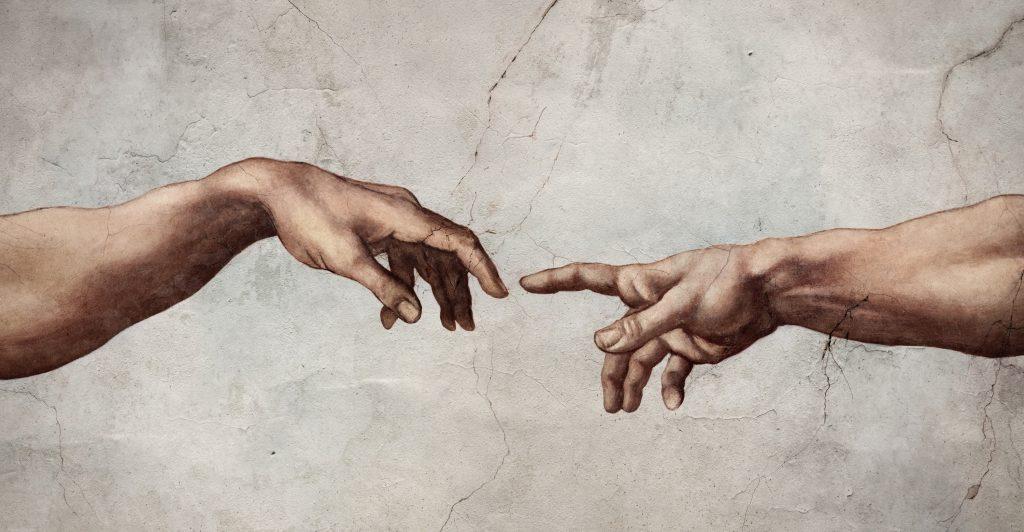Mind and Consciousness
The mind only has the ability to interpret and see reality through the five senses. Because of this, the interpretation of reality changes from person to person and is always subjective. If we wish to encounter our interior divinity, then we require a medium other than the mind in order to do so.
This medium is what is known as consciousness. Consciousness is what lies within our divine spark, and when we connect and develop this inner spark it grows and grows and develops into consciousness. This occurs when the divine spark within us becomes active, displacing the personality and the ego.
To begin to experience sparks of illumination we have to realise that spirituality is not lived and understood through the mind, but rather understood and lived by our divine spark.
Many people fall into the trap of thinking because they have attained intellectual knowledge about a particular topic, they have comprehended that subject. In fact, true comprehension is not based in the mind, but rather through lived experience. This is why a personal practice that exists outside of the mind is needed in order to develop our divine spark.
Our consciousness has the ability to think and contemplate things in a profound manner in a way the mind will never have the ability to do.
To work in a way where we eventually arrive at an experience of our inner divinity we have to come to the realisation that we need to break away from the mind.
In order to experience these sparks of illumination, we need to be at a point where we are harmonising and matching the frequency of our interior divinity. It would be the equivalent of tuning into a radio station. We need to be able to turn the dials of our radio in order to tune into the particular frequency of the station we wish to listen to.
The same principle applies to the field of esotericism. To tune into the frequency of our divine spark we need to be using the right equipment. This equipment is not the mind. Rather, we have to learn to step outside of the mind and into the unknown, which is what our divine spark is.
The mind operates from the known to the known and by means of the senses. As soon as something is experienced outside of the realm of the senses, the mind cannot classify it, and therefore the mind disregards it.
The way in which we start to disconnect from the mind is by practising meditation. Meditation allows us to retreat into ourselves and turn inwards, away from the mind.
Meditation itself has nine stages to pass through in order to reach the state of one-pointedness, the state where we transcend the mind completely and detach from it. Once we reach detachment of the mind, our attention shifts from the external to the internal and we start to work with the principles of imagination, inspiration and intuition.
Understanding Thoughts
Meditation in fact is to not escape our thoughts, memories, concepts, etc, but rather to understand them. It is in understanding our thoughts that we can resolve them, and they stop persisting within our mind. If something continually comes to us, it is because that impression remains untransformed.
Everything that is generated by the mind, which also extends to our emotions, carries an energetic weight to it. We see this when we get bad news about something. The impression hits us and we may even physically feel ill, because of the weight that news carries. The opposite can also be true, where we receive good news about something and we feel good, it changes our mood and we are uplifted for the duration of the day.
So, if something keeps coming to us, it is because energetically we haven’t resolved it. This means our attention will be consumed by that impression until we resolve it.
So many people think that they can use meditation as a means of escapism. They wish to escape the problems that persist during their day, but inevitably these thoughts will pop up during the practice of meditation and they will not be able to achieve inner silence until those elements are resolved.
This is why when you first start to meditate and expect to find peace and silence, you can find the complete opposite. Your mind becomes agitated and everything seems to get worse. This is because we cannot simply put all of our problems to one side in order to achieve one-pointedness.
We need to realise that a big part of meditation is resolving these impressions that are unresolved and often carry over from day to day.
Meditation is the appropriate space for us to investigate the thoughts of the mind and apply the Socratic method of deduction. This is where we question and question something until we reach the point of uncovering the truth of it. In the case of our mind, this leads us to understand the cause of our thoughts, worries, preoccupations, etc.
The first thing we have to do is to learn to process and overcome our thoughts and, to a certain extent, embrace our thoughts. We embrace our thoughts by applying logic and reason to understand each thought with the intent to process it. Once processed, the thought does not bother us further and we are able to go deeper into the practice of meditation.
Once you clear a thought, you may have moments of silence, followed by the arrival of another thought. This occurs as we delve deeper into the mind. The purpose of meditation is to clear our thoughts in all levels of the mind, at which point we can begin to encounter our inner divinity. This is a process that takes a lot of time and requires patience.
The Art of Meditation
The word ‘meditation’ means to ‘become familiar with oneself’.
The true purpose of meditation is to come to discover ourselves as an entity beyond the physical.
The western model views meditation as a way to overcome the demands and stresses of modern day life. However, the purpose of meditation is not only to relax the physical body, for instance, because then we then just limit ourselves to the physical dimension and do not penetrate deeper into the other dimensions of nature and within.
We have to begin to broaden and deepen our understanding of meditation and understand that if we limit meditation to a practice of dealing with the demands of modern life and view it in that superficial sense, then that is all we are going to experience.
Most people do not understand the true intention and purpose of meditation and are unaware of the reality that lies within. They see meditation in the light of everyday life, but once we gain an understanding that there exists divinity within us, then we understand the true purpose of meditation, to ‘become familiar with oneself’.
The purpose of meditation is to escape the mind, thoughts, memories, concepts and ego in order to disconnect from these things and create a space within.
Zen Buddhism tells a story of how we must rid our mind of preconceived ideas and notions in order to create space for divine inspiration and understanding.
The story goes:
Once upon a time, there was a wise Zen master. People travelled from far away to seek his help. In return, he would teach them and show them the way to enlightenment.
On this particular day, a scholar came to visit the master for advice. “I have come to ask you to teach me about Zen,” the scholar said.
Soon, it became obvious that the scholar was full of his own opinions and knowledge. He interrupted the master repeatedly with his own stories and failed to listen to what the master had to say. The master calmly suggested that they should have tea.
So the master poured his guest a cup. The cup was filled, yet he kept pouring until the cup overflowed onto the table, onto the floor, and finally onto the scholar’s robes. The scholar cried “Stop! The cup is full already. Can’t you see?”
“Exactly,” the Zen master replied with a smile. “You are like this cup — so full of ideas that nothing more will fit in. Come back to me with an empty cup.”
It is through the art of meditation that we are able to ‘empty our cup’ - to quieten the mind and create the space and vibration required in order to connect with our inner divinity.

